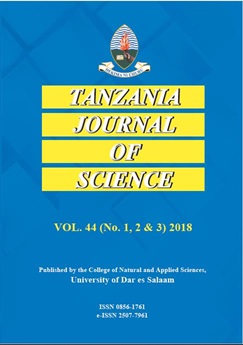Investigation of Antidiabetic Activities of Cu(II) Complex of Anacardium occidentale Leaves Crude Extract
DOI:
https://doi.org/10.4314/tjs.v49i2.3Abstract
Many synthetic chemical drugs have been widely used for the treatment of diabetes. However, many of these drugs are not locally available, are less effective, and are unaffordable for many diabetic patients in developing and underdeveloped countries. Therefore, in order to search for a locally available, effective, and cost-effective antidiabetic agent, this study synthesized the Cu(II) complex of crude leaf extract of Anacardium occidentale and investigated its antidiabetic activity in alloxan induced albino rats. The leaf crude extract and its metal complex were characterized using atomic absorption spectroscopy (AAS) and infrared (IR) spectroscopy. Experimental diabetic animals were induced by a single intraperitoneal injection of alloxan monohydrate at a single dose of 140 mg/kg body weight (b.wt.), and animals with fasting blood glucose levels (BGL) > 200 mg/dl were considered diabetic. Metformin was used as a standard drug. Fasting blood glucose level (BGL) and body weight were examined in assessing the antidiabetic activities of the crude extract and its complex in the rats. One-way ANOVA was used to determine the antidiabetic activity at a statistical significance level of p < 0.05. The hypsochromic shifts of C=O and O-H bands in the Cu(II) complex and the high concentration of the metal ion in the metal complex established the coordination of the crude extract with the metal ion. A more significant reduction in the blood glucose level and increase in body weight in alloxan-induced diabetic albino rats was observed when treated with the leaves crude extract and its Cu(II) complex than when treated with the standard drug metformin. It can be concluded that the Cu(II) complex of Anacardium occidentale leaf extract at a dose of 400 mg/kg wt is more effective without abnormal weight gain and could be considered as a potential antidiabetic drug to replace some of the less effective and expensive conventional antidiabetic drugs.
Keywords: Albino rats; Crude extract; Diabetes mellitus; Medicinal plant; Metal complex;


